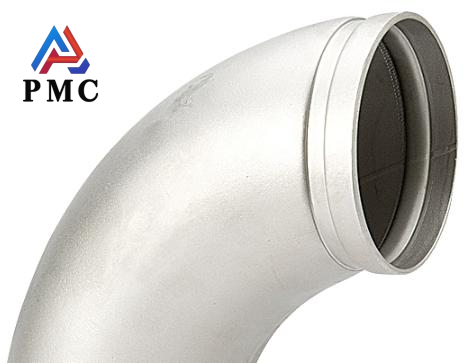
Precautions for Maintenance of Stainless Steel Elbows
The main difference between stainless elbows and carbon elbows is the material. The chemical composition contained in the stainless steel elbows will keep the surface of the elbows from rusting for a long time and not easily corroded. In addition to carbon steel, the materials of elbows include cast iron, stainless steel, alloy steel, wrought iron, non-ferrous metals and plastics.
90° stainless steel elbow is mainly used as a kind of connecting pipe fittings in pipeline installation, used for connecting the bends of pipelines. The stainless steel raw material in the stainless steel elbow is a void solid solution formed by elements such as chromium and nickel in γ-Fe. The main characteristics of this type of steel are: it has a non-magnetic austenitic structure at room temperature, low yield strength ratio, good plasticity, good welding performance, and is easy to be trained and hot-formed by casting and forging.
When stainless steel elbows are rusted, special cleaning agents are usually used to clean the rust spots. And they should also be cleaned more frequently during daily use. If there is dust or easy-to-remove stains on the surface of the stainless steel elbow, it is advisable to wash it with warm water or a weak detergent, or soapy water. If there is a sticky film such as a trademark on the surface of the stainless steel elbow, it can also be washed with a weak detergent, but it needs to be washed with clean water and wiped dry after washing.
For stainless steel elbows, reasonable maintenance is very important, so what should we pay attention to when maintaining stainless steel elbows?
1. During installation, the stainless steel elbow can be directly installed on the pipeline according to the connection method and installed according to the location of use. Generally, it can be installed at any position of the pipeline, but it needs to be easy to operate and inspect. Note that the flow direction of the stainless steel elbow medium should be upward from the bottom of the longitudinal valve disc, and the stainless steel elbow can only be installed horizontally.
2. Use handwheel for stainless steel elbows. Do not use levers or other tools to avoid damaging the valve parts.
3. When using ball valves, stop valves and gate valves with stainless steel elbows, they can only be fully opened or fully closed. They are not allowed to be used to adjust the flow rate to avoid erosion of the sealing surface and accelerated wear.
4. Stainless steel elbows that are stored for a long time should be inspected regularly, and the exposed processing surface should be kept clean and cleaned. They should be neatly stored in a ventilated and dry place indoors. Stacking or outdoor storage is strictly prohibited. Always keep the stainless steel elbows dry and ventilated, keep the device clean and tidy, and store them in the correct storage method.
5. The bolts of the packing gland of the stainless steel elbow valve should be tightened evenly and should not be pressed into a crooked state to avoid damaging the valve stem, hindering its movement or causing leakage.

6. Gentle cleaning: Wipe the stainless steel elbow regularly with a clean soft cloth to remove dust and stains on the surface. If you encounter more stubborn stains, you can use a neutral detergent (such as mild dishwashing liquid), dilute it and wipe it with a soft cloth, then rinse it with clean water, and then wipe it with a dry cloth to keep the surface dry to prevent water spots from remaining.
7. Avoid damage: During the cleaning process, do not use rough cleaning tools such as steel wool and scouring pads to avoid scratching the passivation film on the stainless steel surface and reducing its corrosion resistance.
8. Appearance inspection: Check the surface condition of the stainless steel elbow regularly to see if there is any rust, discoloration, corrosion, deformation, cracks, etc. If slight rust or corrosion is found, use a stainless steel-specific rust remover to treat it; if deformation or cracks occur, replace it in time to avoid safety accidents.
9. Connection inspection: Check the connection between the stainless steel elbow and the pipe to ensure that the connection is tight and the seal is good. Check whether the bolts and nuts are loose, and whether the sealing gasket is aging or damaged. If there is any looseness or damage, tighten or replace it in time to prevent medium leakage.


